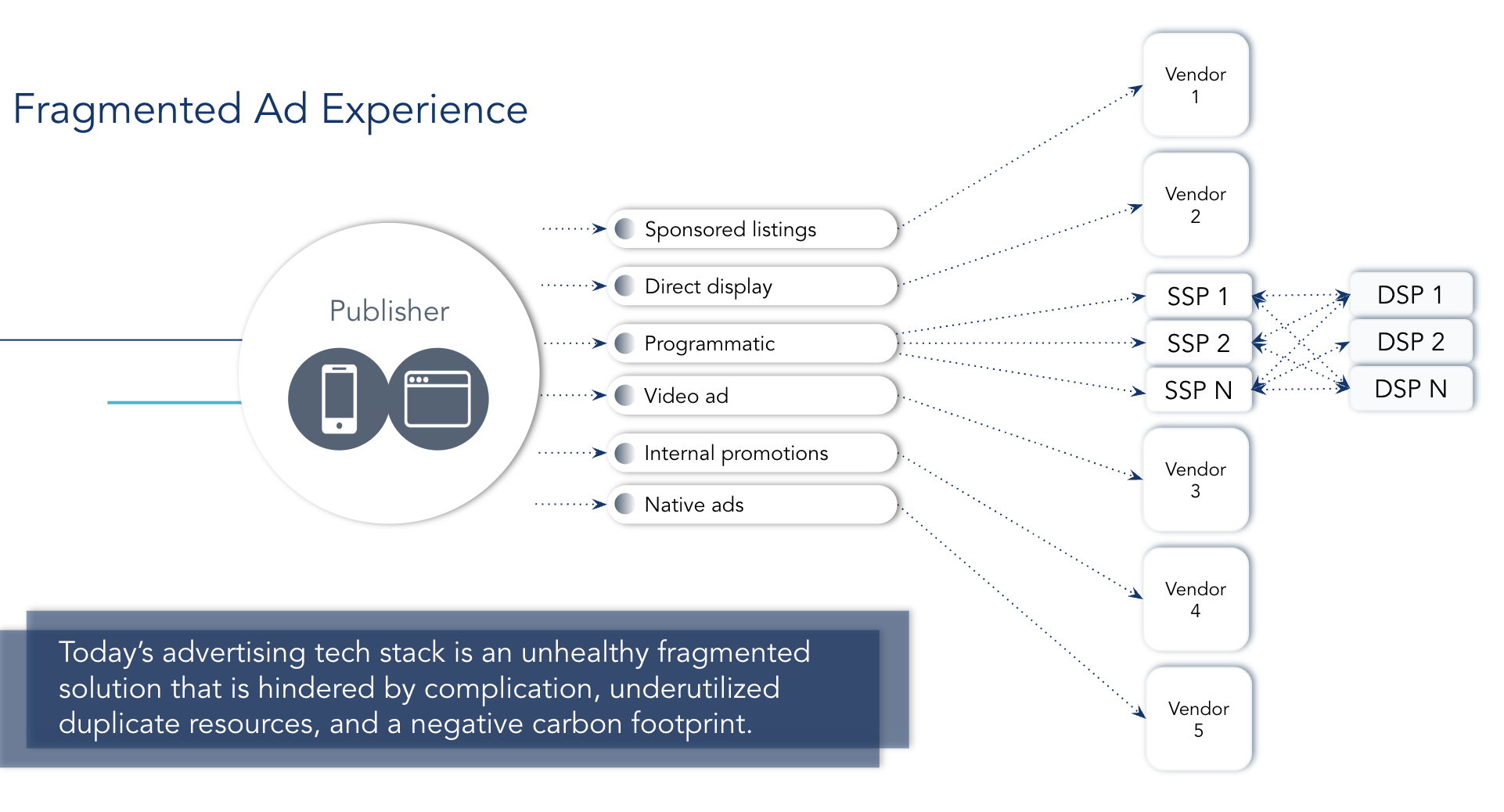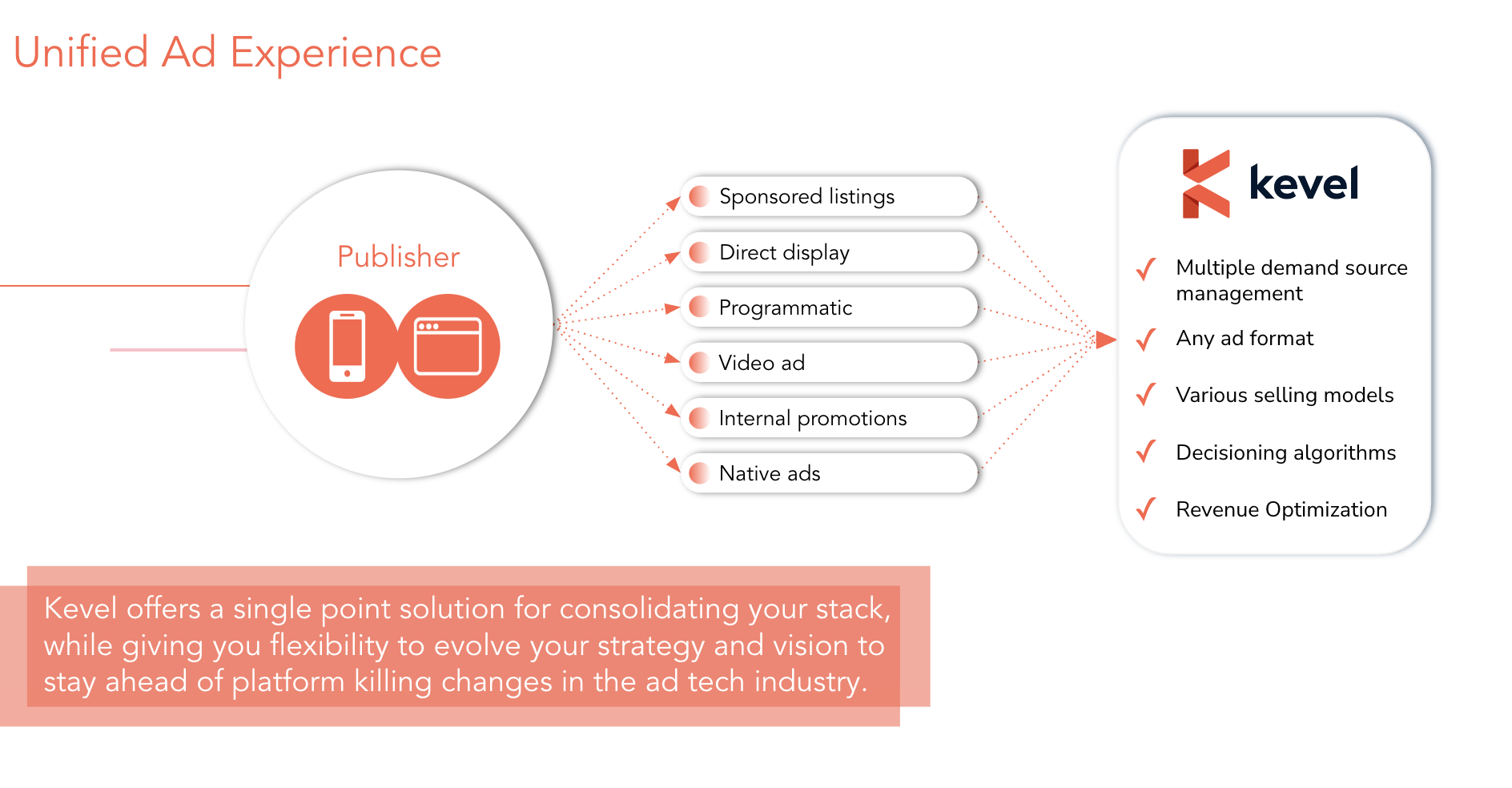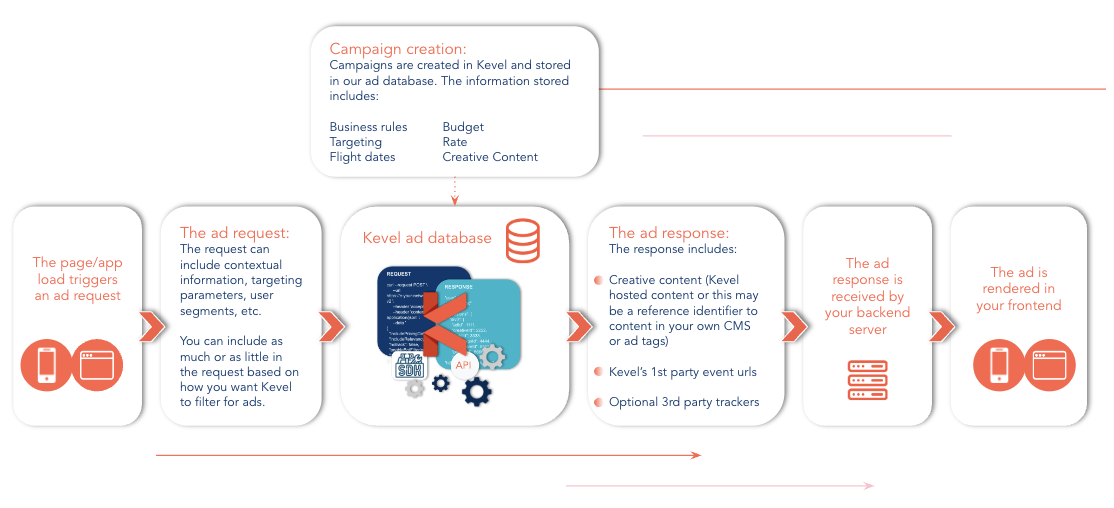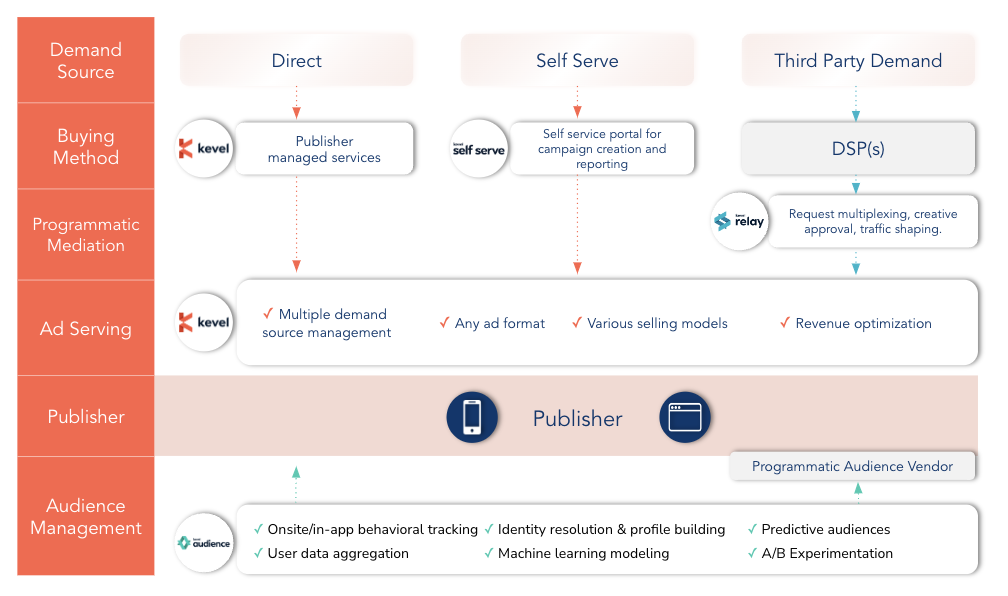Introduction to Kevel
Kevel is a set of APIs that allows for customers to build a unified ad platform that allows for any ad format, any creative, and management of multiple demand sources.
Currently, the ad tech ecosystem suffers from an unhealthy fragmentation of technologies, which requires publishers to engage with multiple platforms to execute cross-format, cross-channel campaigns.

We believe there is a better way to tackle this problem. At Kevel, we have carefully made architectural choices that prioritize flexibility. This approach empowers us to build a unified ad platform by leveraging the capabilities of our APIs. By doing so, we enable publishers to seamlessly manage cross-format, cross-channel campaigns without the need to work through the complexities of multiple platforms. Our goal is to provide a streamlined and efficient solution for the ad tech ecosystem.

What's the Kevel advantage?
Kevel is a fully featured ad server that can serve any creative and any ad format, including standard IAB ads, video ads, DOOH, audio ads, sponsored listings, native ads, and any other digital asset that requires a serving decision.
How do we do it?
- We're server-to-server, which means you're not constrained by client side ad code written for specific ad formats.
- You tell us what creative content you want returned, and that's what we return.
- Our ad template creator tool helps you operationally standardize the non-standard.
A note on what it means to be server-to-serverBeing server-to-server means that the ad serving process and communication happen directly between servers, without relying on client-side ad code that is specific to certain ad formats.
In the traditional client-side approach, when a user visits a webpage or opens a mobile app, the client-side ad code (usually JavaScript) runs in their browser or device. This code then communicates with an ad server to request and display the appropriate ad format. This approach has limitations because the client-side code must be tailored to each ad format, making it less flexible and more challenging to manage. Most ad servers function in this way and are built for limited ad formats.
On the other hand, a server-to-server approach means when a user accesses a webpage or app, the server handles the ad response from Kevel and then works with frontend code to render the ad content.
For publishers, this server-to-server setup means you are not constrained by the limitations of client-side ad code, and can integrate different ad formats. It also allows for easier updates and maintenance, as changes can be made on the server-side without requiring client-side modifications.
Overall, the server-to-server architecture offers a more efficient and flexible solution for ad serving and enhances the overall ad tech ecosystem.
See below for a high level look at how this process works in Kevel:

Unified demand source management
When it comes to creating a unified ad stack, it’s not just about flexibility in ad formats served, but also the ability to be one centralized workbench for all your demand sources.
We’ve built Kevel with the idea that we are a foundational piece of your ad tech stack, and because we’ve built with flexibility in mind in an API first environment, this means we have everything you need to get started (and more), but we also make it easy to integrate with other tech as you grow your ad stack in terms of intentionally added sophistication versus a frankenstack of tech that doesn’t play well together.

It's a different way of thinking about ad serving and how you build a scalable ad stack, but once you get it, it's hard to imagine why all ad servers don't work this way.
Updated 3 months ago
